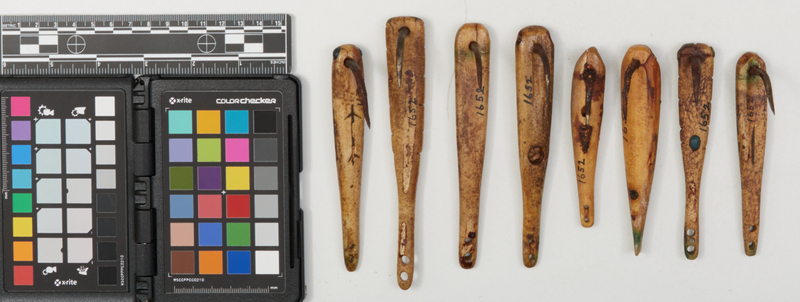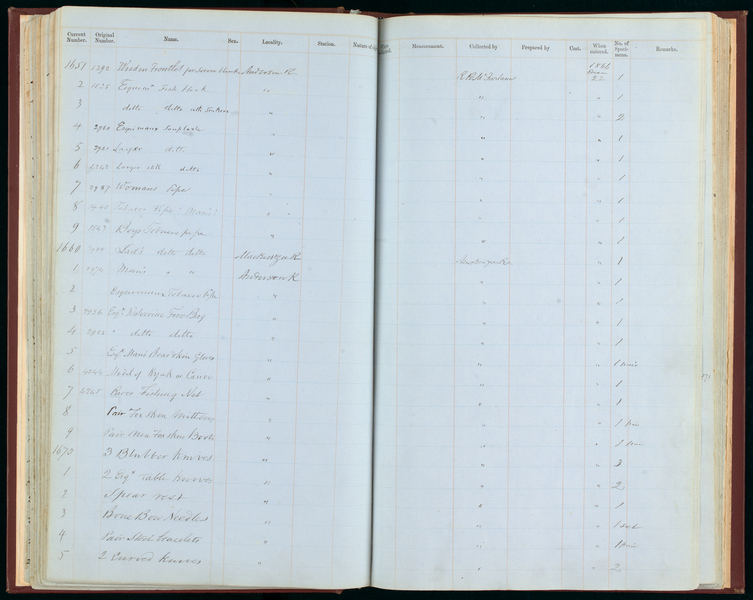Fish Hook Item Number: E1652-0 from the National Museum of Natural History





Notes
FROM CARD: "ILLUS. HNDBK. N. AMER. IND., VOL. 5 ARCTIC, PG. 352, FIG. 6A."Source of the information below: Inuvialuit Pitqusiit Inuuniarutait: Inuvialuit Living History, The MacFarlane Collection website, by the Inuvialuit Cultural Resource Centre (ICRC), Inuvik, N.W.T., Canada (website credits here http://www.inuvialuitlivinghistory.ca/posts/12 ), entry on this artifact http://www.inuvialuitlivinghistory.ca/items/187 , retrieved 12-17-2019: This is a set of eight fish lures with shanks made from antler and bone and with iron hooks. The shank of each lure is narrow at one end, where a pair of holes has been drilled for attaching to a fishing line, and broader at the opposite end where a hook has been inserted into a drilled hole. Most of these lures have been decorated with lines engraved into the shank. Several have pieces of copper and glass beads and pieces of ivory beads set into the shank, in some cases near the hook ends, in imitation of small fish. One lure has a serrated edge, a feature that helped in attaching a piece of fish skin bait or a weight. More information here: http://www.inuvialuitlivinghistory.ca/item_types/21: Fishing tackle was used for catching fish in rivers and streams during the open water season, and for jigging through holes chiseled through ice in winter and spring. Fishing tackle in the MacFarlane Collection includes fishing rods (iqaluksiun) with lines (ipiutaq) made from baleen, and bone and antler lures (niksik) with iron hooks. Less commonly, fishhooks were made from wood.
Item History
- Made in Northwest Territories, Canada
- Collected in Northwest Territories, Canada
- Received from Roderick R. MacFarlane on December 21, 1866
What
- Name
- Fish Hook
- Identification Number
- E1652-0
- Type of Item
- fish hook
Who
- Culture
- Eskimo, Inuit and Inuvialuk
- Received from
- Roderick R. MacFarlane
Where
- Holding Institution
- National Museum of Natural History
- Made in
- Northwest Territories, Canada
- Collected in
- Northwest Territories, Canada
When
- Acquisition Date
- on December 21, 1866
Other
- Accession Number
- 66A00090